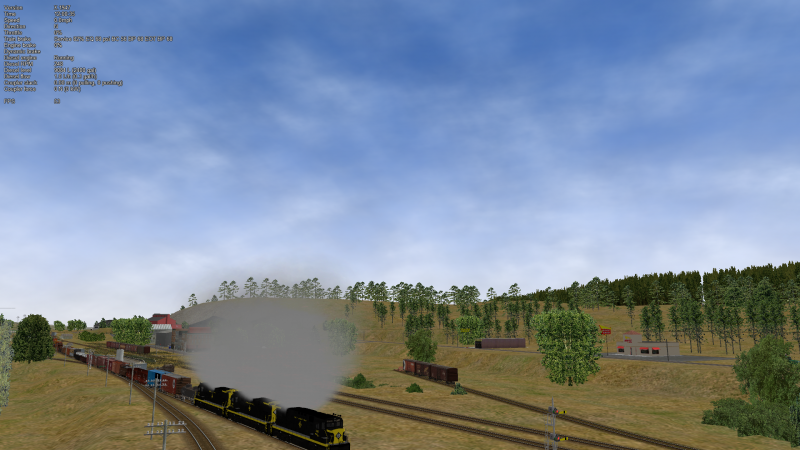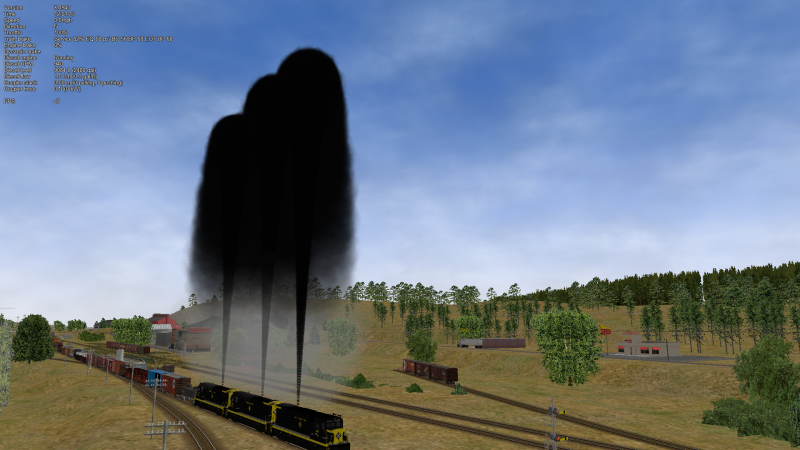Both with stam and Diesel locomotives, the smokestacks are usually vertical. That means, with (what will rarely be done - this is just imagery) full throttle / bad firing at standstill, smoke will be blown out vertically (asuming no windspeed, as this is currently not modelled in OpR).
If the smoke blown out would keep its initial velocity, it would rise up straight into the sky, like a rocket´s smoke colums - no plume would be formed. The plume is the product of the exhaust gases slowing down the farther away from the stack they get. To make space for more smoke, they are pushed to the side, forming the plume.
For the next part it is easier to not imagine smoke as gases, but rather as the different patchs OpR uses to produce diesel smoke currently.
The above paragraphs can e transcribed for these patches as well (this is NOT, what OpR models - I just use the idea of patches / particles to illustrate my thoughts): Patch starts out vertically, locomotive standing still, moving along a vertical line at a specific initial speed. As a matter of air cooling down and other air resistance, the patch loses speed and thereby its volume rises (it expands).
If the locomotive now starts to move, it will still emit patches along a vertical line - no angle will be changed there! Instead, the locomotive will move away below the patch emitted when stopped, and will start the next patch maybe one ft down the track.
This patch will raise along a straight, vertical line too, parallel to that of the first patch. But it´s one foot down the track, and the patch was started out later. As a consequence, the patch emitted earlier will already be higher in the air and back a little.
If you now imagine this being done for multiple patches you will get a great plume, with no need for difficult physics (ias far as I can tell). All that is needed would be a particale system which for every particle (smoke patch) could define the following options:
- vertical path to follwow (can be other than vertical (as defined by the .ENG file), this won´t influence the process)
- speed at which it rises initially and current speed
- rate at which the speed declines
- rate at which the particle expands, forming the typical conical (somewhat...) shape of a smoke plume (at standstill)
- some sort of lifetime to get rid of the particle again at one point
I´ll post a schematic drawing later, as soon as I can assemble one.
Cheers, Markus

 Log In
Log In Register Now!
Register Now! Help
Help













